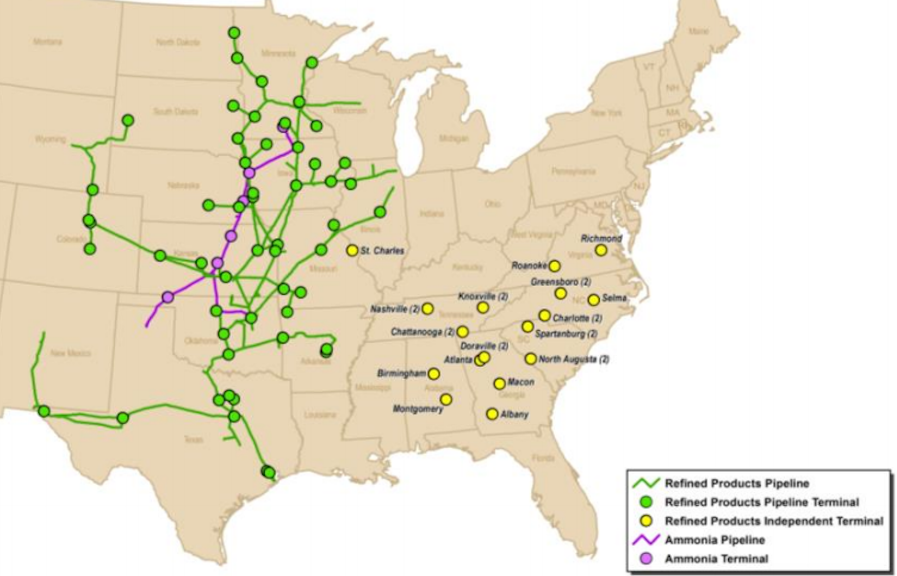An Oklahoma landowner's petition filed in a state court to have a shut down 1,100-mile ammonia pipeline that runs from Texas to Minnesota deemed abandoned and removed by its owner Magellan Midstream Partners, was moved to federal court for approval as a class action on Feb. 24.
The 8-in pipeline that is about 45 years old was built to carry hazardous materials including ammonia under easements from landowners. Cost to remove it has not been determined, but it would meet the minimum $5 million requirement to be a class action lawsuit.
Magellan claims the structure is permitted and lawful and the company has no obligation to remove it.
According to the petition, the defendants, which also include Magellan Ammonia Pipeline, had filed documents in 2019 with the U.S. Dept. of Transportation's Pipeline and Hazardous Materials Safety Administration saying they had abandoned the pipeline and filled it with “salt water, or inert gas and that it has been permanently disconnected and sealed.” The peition adds that “Magellan has now abandoned the entire NH3 system from Texas to Minnesota.”
Magellan started decommissioning the pipeline during the fourth quarter of 2019, citing low margins, high operating costs and potentially lower ammonia supplies. The company considered repurposing the pipeline, but costs associated with the maintenance were infeasible, CEO Michael Mears said at the time.
Abandonment of the pipeline also abandons the easements across the properties of landowners in the proposed class action across the five states, the petition contends.
“The defendants no longer have any right to travel or enter the property to store, maintain or leave equipment, outbuildings, signage or pipeline on the landowners’ property,” the petition says. Their continued use of the property and failure to remove the pipeline interferes with the landowners’ rights and interests, they say.
Magellan said on March 3 that the easement and right of way were granted “forever” in 1976 by the previous landowner and are binding to successor owners.
The easement is “silent on removal,” the company said in a document filed in federal court in Oklahoma, adding that any loss of value to the property occurred at the time of the pipeline’s construction. The previous owner was paid $10 for every 16.5 feet of pipeline, but the length of the pipeline was not disclosed.
The Oklahoma landowner on behalf of the proposed class seeks actual damages—including the cost to remove the pipeline and remediate the land including placement of fill dirt, as well as the decrease in value of the property and fair market value based on its use for storage of the abandoned pipeline and related property.





Post a comment to this article
Report Abusive Comment